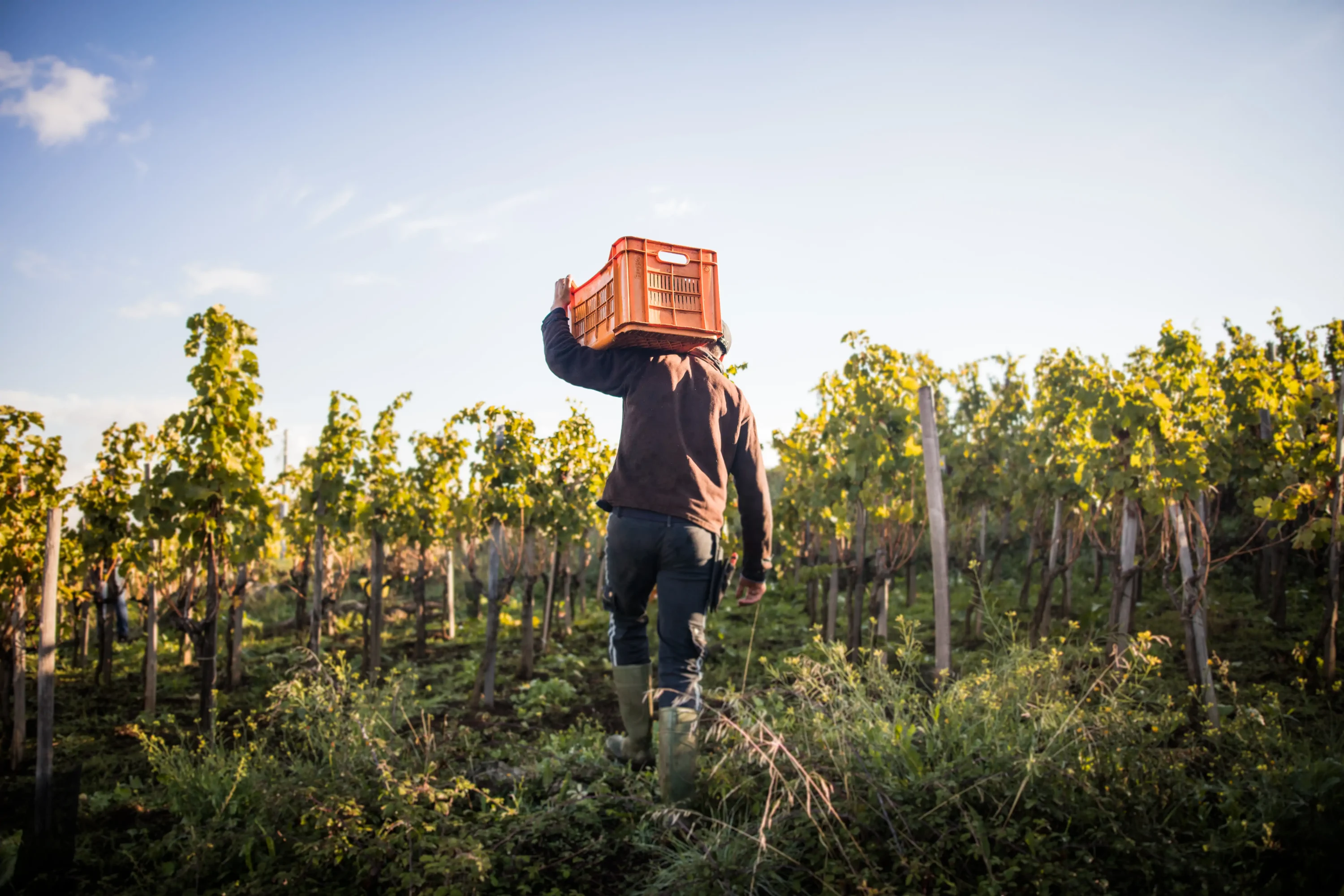Many restaurants work with large-scale distributors to stock their kitchens. But building direct relationships with local farms often gives you fresher ingredients and more control over the quality of those ingredients. From finding reliable producers to managing costs and seasonal availability, restaurants that source locally need the right setups in place to benefit both their business model and farming partners.
Here’s everything you need to know about building relationships with local suppliers.
What does ‘farm-to-table’ mean?
Farm-to-table sourcing is when your restaurant buys ingredients directly from local producers instead of traditional distributors. While the term is widely used, true farm-to-table means ingredients come straight from producers to your kitchen, and not through stores, markets, or distributors. Farm-to-table operations prioritize ongoing relationships with farms, ranches, fisheries, and other local producers
The direct connection between restaurants and producers can take different forms. Some restaurants work with multiple small farms for specialty ingredients while maintaining relationships with larger distributors. Others source almost everything locally, adapting their menus to what’s available each season. The most successful programs find a balance that works for their restaurant setup.
Key differences between farm-to-table and traditional sourcing:
- Direct communication between the restaurant and producer instead of relying on intermediaries
- Shorter supply chains for fresher ingredients and reduced food miles
- More seasonal menu planning based on what’s locally available
- Different pricing and payment arrangements
- Smaller, more frequent deliveries rather than bulk shipments
- Need for backup suppliers when local products aren’t available
Does farm-to-table help reduce food waste?
Direct relationships with local farms can cut down on food waste throughout the supply chain. When you work with local producers, ingredients spend less time in transit and storage. That means they arrive fresher and last longer in your kitchen. In fact, local food systems can decrease food miles by up to 80%, significantly reducing spoilage during transportation and making sure produce retains its freshness for longer periods.
Plus, farmers can harvest closer to your actual needs, rather than guessing at quantities weeks in advance. Working closely with suppliers also means there’s more flexibility in ordering. You can adjust amounts based on real-time kitchen needs and upcoming reservations, which prevents overstock of perishable items in the process.
Many restaurants find they waste less food when sourcing locally because they can communicate directly with farmers about exactly what they need and when they need it.
See how SHIA is leading the way in sustainability
Benefits of sourcing from local suppliers
Beyond sustainability, partnering with local farms offers competitive advantages for restaurants.
Superior ingredient quality
Meeting farmers face-to-face and visiting their operations lets you see exactly how your ingredients are grown and handled. You can provide specific feedback about quality and work directly with producers to get top-quality ingredients tailored to your kitchen’s needs.
Menu differentiation
Local ingredients translate to unique menu items that set your restaurant apart from competitors. Working directly with producers often means access to specialty varieties and ingredients you won’t find through major distributors.
For example, you might find heirloom tomato varieties or unique mushrooms that aren’t available through standard distribution channels. Featuring these exclusive ingredients can help set your menu apart with distinctive options that guests can’t get elsewhere.
Marketing & branding opportunities
Guests care about where their food comes from, to the point that 34% of people say sustainability highly impacts their food and beverage purchasing decisions. Local sourcing gives your restaurant an authentic story to share—highlighting the farms and producers behind your dishes.
Ways to market farm-to-table sourcing:
- Feature farmer profiles on your menu and social media
- Mention local sourcing in dish descriptions
- Host farm-to-table events or experiences
Supply chain resilience
Relying on a single large distributor can lead to disruptions. By having relationships with multiple local suppliers, your restaurant becomes more adaptable. If one producer has a crop failure or delivery issue, you can tap your network of relationships to fill the gap.
Community connection
Supporting local producers builds goodwill and connects your restaurant to the community—any brand’s dream. Again, these relationships often lead to word-of-mouth marketing and loyal customers who value locally-sourced dining.
Cost management
While local ingredients aren’t always cheaper, eliminating distributor markups can offset costs. Working directly with farmers lets you negotiate prices and lock in costs, especially during peak growing seasons.
How to build relationships with local suppliers
Finding the right local suppliers takes research and outreach. Start by visiting farmers markets to meet producers and sample their products. Local farm organizations, agricultural extension offices, and other restaurants in your area can also connect you with reliable suppliers. Look for producers who already work with restaurants and understand the unique demands of food service.
Once you’ve identified potential partners, schedule farm visits to see their operations firsthand. Have clear discussions about your needs, including
- Delivery schedules
- Pricing
- Payment terms
- Quality standards
- Backup plans if a crop fails or supply runs low
Many restaurants start with a single product or ingredient to test the relationship before expanding the partnership.
Knowing what you want from farm-to-table suppliers
Having a clear line of communication with your suppliers will help lay the foundation for a successful partnership. Start by sharing your projected needs and budget with potential partners. While the exact numbers may fluctuate somewhat, suppliers need a sense of your typical order volumes and price expectations. Most restaurants aim to keep ingredient costs around 30% of menu prices.
Stock management requires consistent attention to prevent both shortages and waste. Your kitchen team should be directly involved in supplier relationships since they work with the ingredients daily. POS systems can help track inventory and usage patterns to give you solid, shareable data with suppliers about what you need and when you need it.
Is farm-to-table expensive?
The cost of local sourcing depends on a number of factors, such as the product, seasonality, and your location. While some specialty ingredients may cost more than their mass-produced counterparts, the benefits often outweigh the costs.
Ways to keep farm-to-table costs manageable:
- Compare prices and negotiate bulk purchases during peak seasons
- Adjust menus seasonally to align with abundant ingredients
- Use a mix of local and traditional suppliers for balance
Charge premium pricing for farm-to-table dishes, emphasizing quality and sustainability
Negotiating with local suppliers
Good negotiation starts with building trust. Local suppliers work best with restaurants that communicate clearly and pay on time. When both sides feel they’re getting value from the partnership, it’s easier to work through challenges and find solutions that benefit everyone.
Points for successful negotiations:
- Share your expected order volumes and timing upfront
- Be realistic about pricing because quality ingredients have real costs
- Ask about bulk discounts during peak seasons
- Discuss payment terms that work for both parties
- Build flexibility into agreements for seasonal changes
Building long-term partnerships takes trust. Just be upfront about any additional suppliers you’re working with and keep communication channels open.
Make farm-to-table work for your restaurant
Farm-to-table isn’t just about fresher ingredients—it’s a smarter, more sustainable way to run a restaurant. Building direct relationships with local farms will give your restaurant better quality ingredients, more unique menus, and stronger ties to your community. Focus on creating sustainable partnerships that benefit both your kitchen and the farms that supply it.




